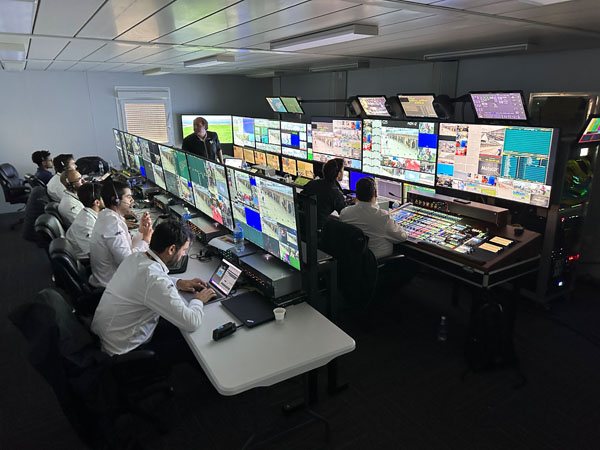The Sound of Speed: MotoGP Racing and Audio-Technica Microphones

Motors are music to the ears of race fans and by that standard, MotoGP racing is a symphony orchestra performing a crescendo. Capturing live audio from a MotoGP race is a herculean task that requires meticulous planning, expert knowledge, and top-notch equipment. The challenges are many, making the process a complex technical and creative endeavor.

The goal is to bring the visceral experience of being at a MotoGP race to screens, speakers and headphones across the world. How do you translate the sights and sounds of an event so huge into a cohesive broadcast that delivers emotional impact? It takes teamwork and state of the art equipment to pull it off.

When Audio-Technica asked if I wanted to see a live MotoGP race, I leaped at the chance. I wanted to experience firsthand how its microphones are used in the live race broadcast, how they bring the viewer into the action. It is no small feat when you grasp the enormity of the task: 2.3 miles of track and 22 of the fastest racing bikes in the world, with speeds exceeding 200 miles per hour for 20 laps.
The Challenge
One of the foremost issues with recording the sounds of motorcycle racing is the sheer volume of noise. MotoGP is loud, with revving engines reaching decibel levels equivalent to a jet aircraft taking off. This cacophony can easily saturate microphones and distort the captured audio.

More than 200 Audio-Technica microphones are in use during a race. This audio equipment is designed to withstand high-decibel environments and unpredictable weather conditions and capture clear, high-definition audio. They cover a broad range of applications, from the track, pit lane, to ENG (Electronic News Gathering) crews, and even (or especially) onboard the bikes themselves. To avoid clipping, the sound is captured as 32-bit floating point digital audio.

The sonic landscape of a MotoGP race is highly dynamic. Motorcycles zoom past creating a rapid shift in sound intensity and pitch due to the Doppler effect. This creates a moving audio target that is difficult to capture accurately. Even though the race is outdoors, the acoustics of the landscape and racetrack structures also have an effect by reflecting, absorbing, or diffusing sound before it reaches the microphones.
Given the outdoor nature of motorcycle racing, microphones are exposed to the elements, requiring effective shielding that doesn’t compromise their audio capture capabilities. Adding to the challenges, because it is a live production there is a need for tight synchronization. Audio captured from…
Read More: The Sound of Speed: MotoGP Racing and Audio-Technica Microphones 2023-07-19 18:22:09
